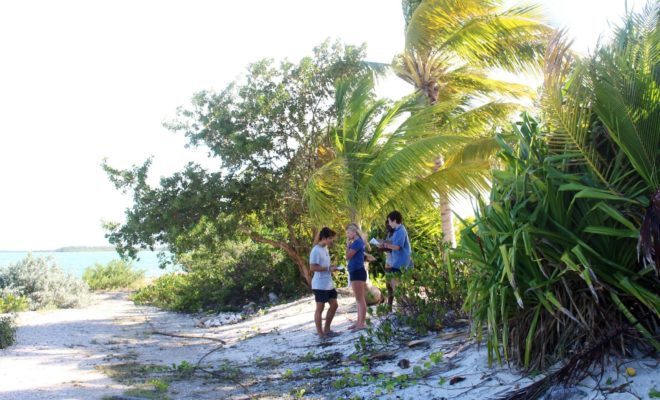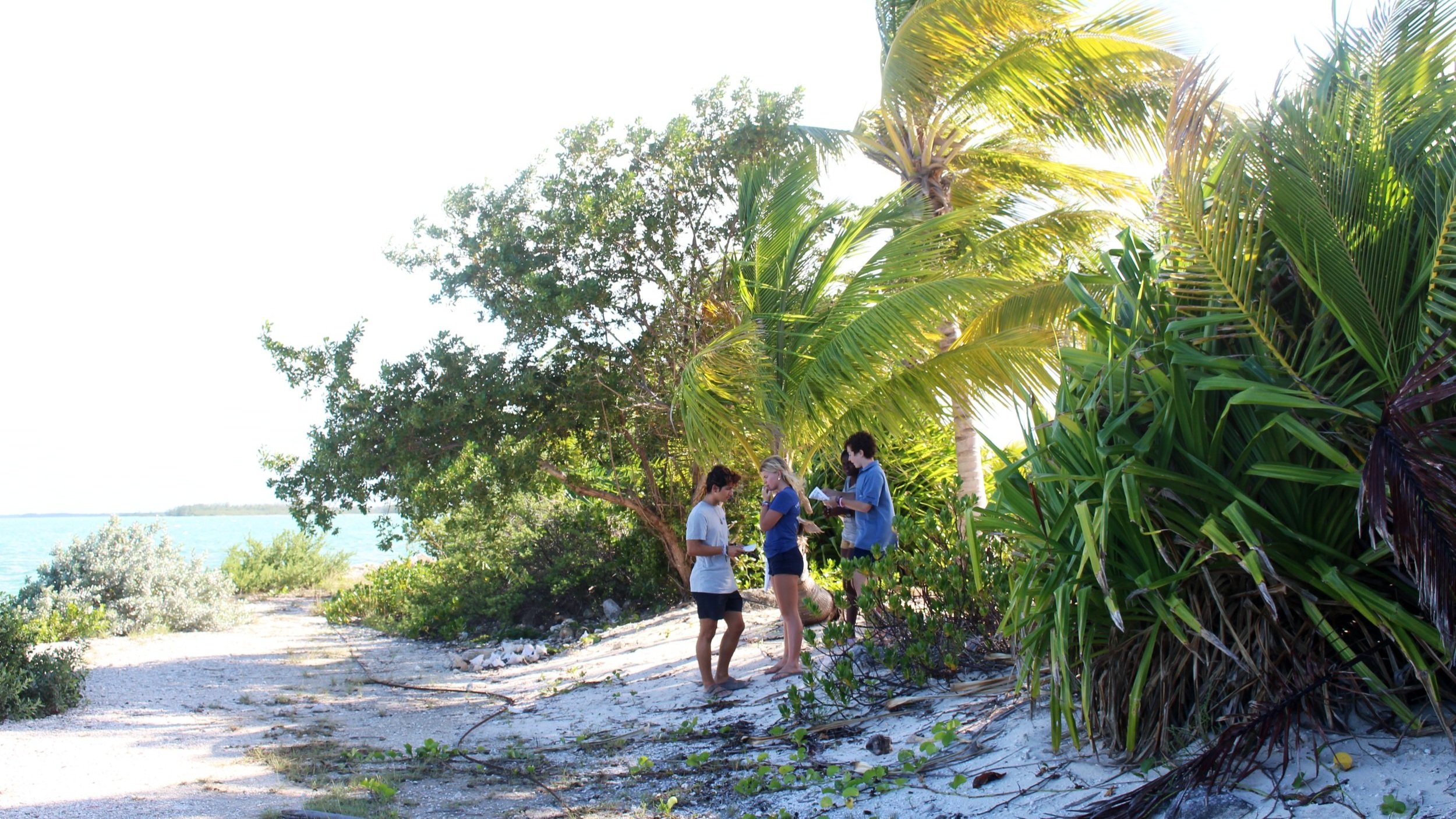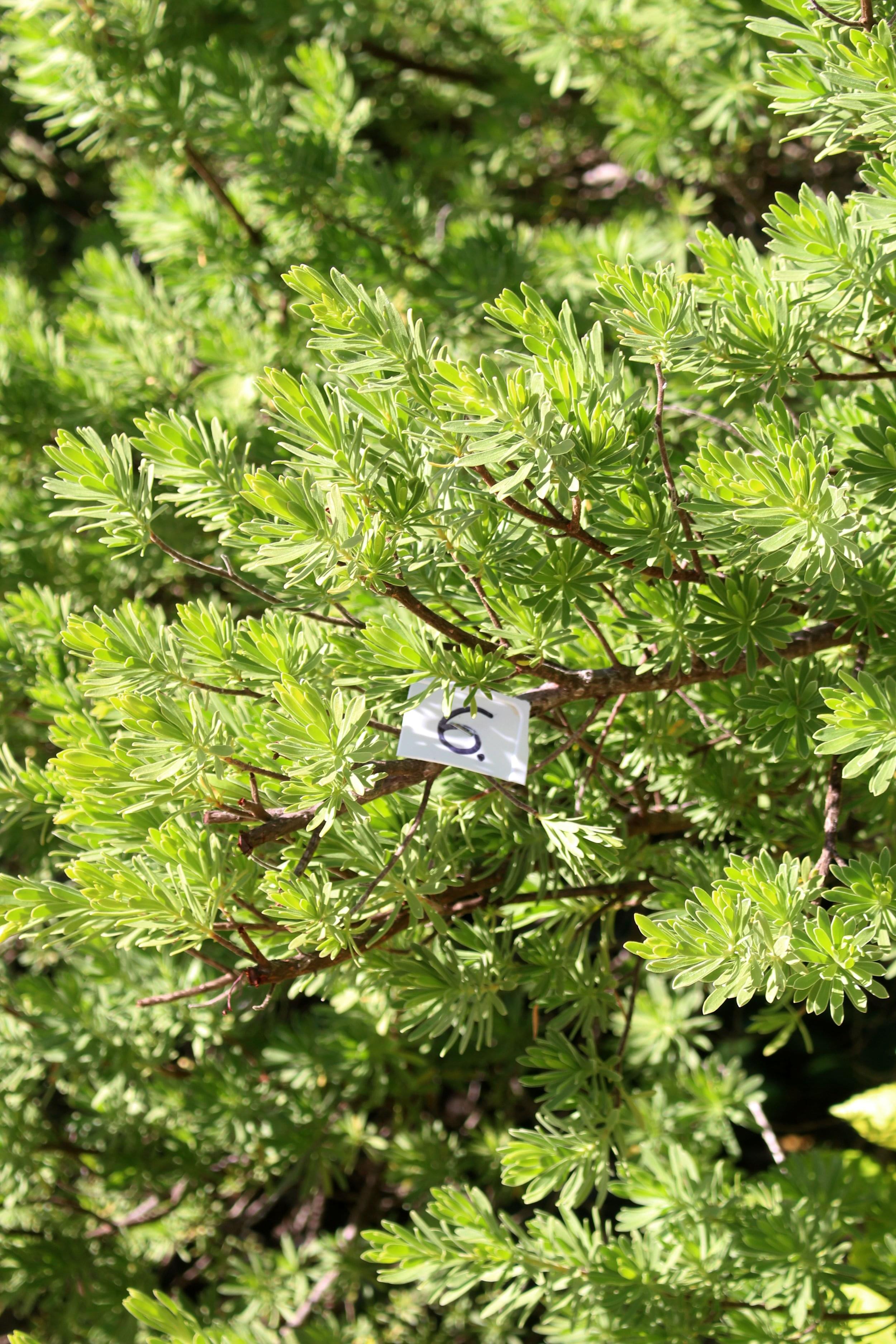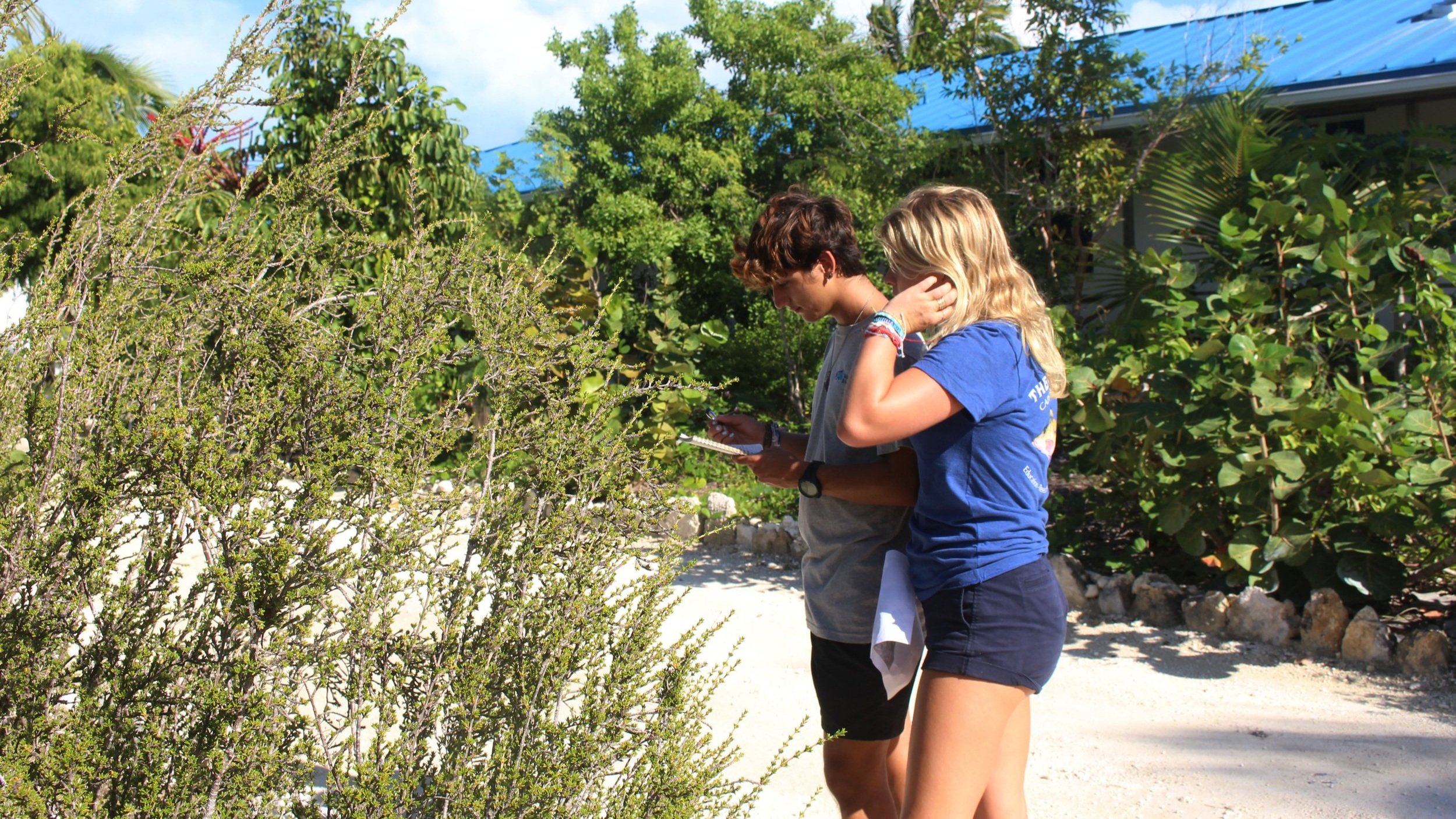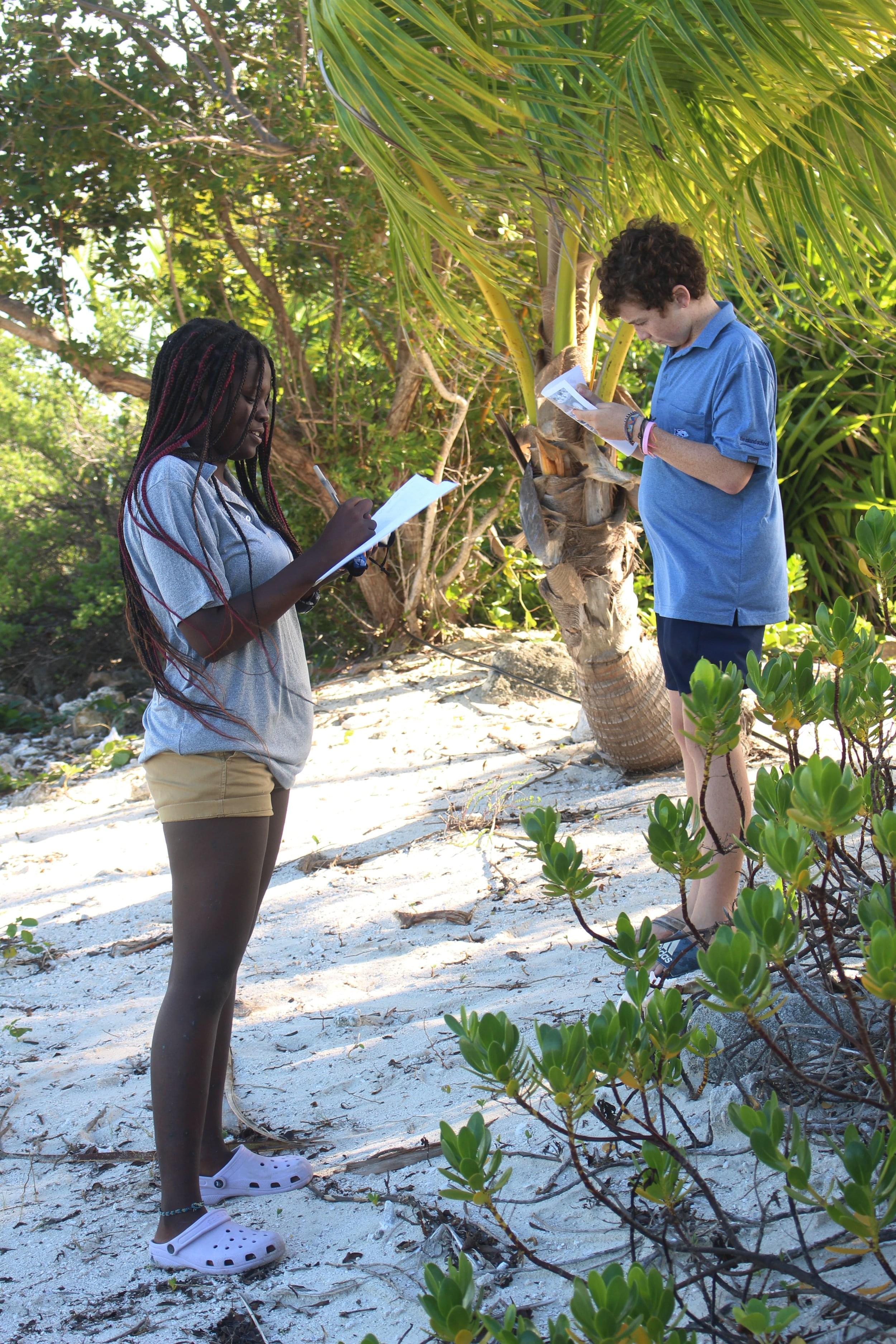Fall 2021 Semester students in the permaculture research class commenced their project with the question, ‘What is the most vulnerable portion of our campus landscape to climate impacts and how can we improve its resilience?’ The coastal zone was identified as the most vulnerable due to the exposure to salt spray, storm surge and strong winds.
Students kicked off the project by surveying the vegetation of several beaches in the South Eleuthera area. The beach surveys revealed which of the plants dominated the harsh beach climate with poor soil conditions, and expressed all the same traits of climate resilient plants from around the world.
Semester students surveying a beach on The Island School campus.
The first step was to learn what is already going on in nature, so we can enhance the ability of plants and plant communities to adapt to a changing climate, and improve the resilience of where we live.
It goes without saying that some vegetation is more resilient to climate impacts than others. The beach surveys revealed which of the plants dominated the harsh beach climate with poor soil conditions, and expressed all the same traits of climate resilient plants from around the world. One reason for this apparent resilience is that these plant communities have a greater diversity of species with special traits that make them better able to withstand climate impacts such as extended droughts and excessive heat.
What traits benefit ‘the winners’ under climate change?
-
Thick, leathery leaves with waxy cuticles, which perform dual functions of cutting down on water loss and reflecting heat away from the plant. Good examples are Clusia rosea (Monkey Apple), Coccoloba uvifera (Sea Grape) and the local Scaevola plumieri (Black Ink Berry).
-
Fleshy leaves that store water such as Sesuvium portulacastrum (Sea Purslane) and Opuntia stricta (Prickly Pear).
-
Small, thin leaves reduce the surface area from which water loss can occur. The tiny yet highly fragrant leaves of Rachicallis americana (Wild Thyme) typify this adaptation.
-
Sunken stomata pits, which trap moist air and reduce water loss rates. The thin Rosemary like leaves of Strumpfia maritima (Mosquito Bush) employ this strategy.
-
Hairy leaves, like those found on Tournefortia gnaphalodes (Bay Lavender) which shade the stomata and protect plants from extremes of light and temperature.
-
Deeper roots and greater below ground biomass enable greater access to water and nutrients; they can also function as carbon storage to support the next year’s growth, and they can facilitate faster vegetative spread. This trait is specifically adapted in dune species such as Uniola paniculata (Sea Oats) which help create dunes by trapping sand and colonizing new areas. This grass is important in maintaining healthy coastal systems that are resilient to storms and sea level rise.
Determining the plant traits that allow species to cope with climate change can direct the conservation and management strategies needed to safeguard the future of rare, endangered and economically important plants. It also enables us to identify those plants more resilient to current and future climate change.
But these winning traits are also possessed by alien invasive plants and global climate change is a huge factor in assisting the spread and establishment of such species like Casuarinas and Scaevola taccada (The White Ink Berry). Increased temperatures and extended droughts may also enable exotic drought tolerant plants such as Oleander or Wild Tamarind to extend their range and compete with less adaptive local flora.
What can we do about it?
-
Protect as much intact, diverse, complex habitats as possible and remove invasive species
-
Increase connectivity between natural areas to facilitate migration of native species
-
Monitor rare plant populations and robust habitats for health and threats
-
Collect and bank seeds of resilient crops, and vulnerable species to preserve genetic diversity
-
Augment or reintroduce rare plants within their historic range
-
Relocate rare plants if necessary
-
Buy and plant locally native plants
Semester students during a permaculture research class.
Permaculture research not only promotes biodiversity and working with nature, our research also guides plant and crop selection in a rapidly changing climate. For crops, we can experiment with more resilient species and cross breeds that are already well-adapted to different climates to generate new breeds that are expected to do better in a changing world.
So what will happen to Eleuthera’s native crops and plants? The short answer is that with decreasing seasonality, more drought, and increasing heavy rainfalls, some will adapt, some will migrate, and some will be lost.
Hopefully, if people know more about what is likely to happen, they will be motivated to put actions into practice now to mitigate the effects of climate change.
